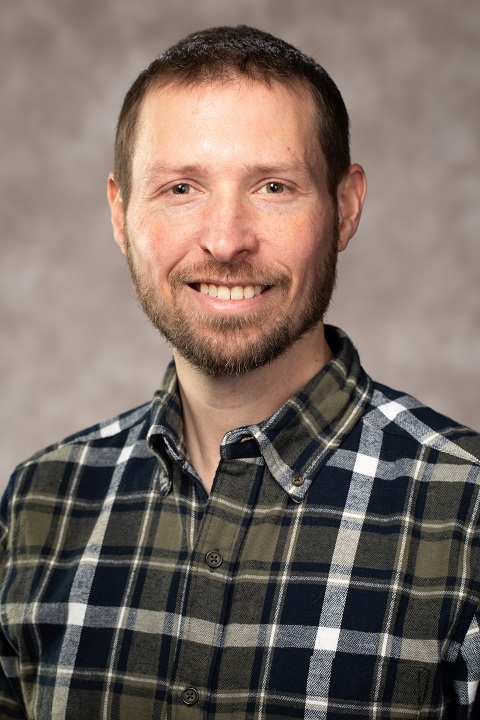 John R. Samuelsen (PhD, University of Arkansas – Fayetteville, 2020) started as the new Science and Technology Administrator (Asst. Archeologist) for the Arkansas Archeological Survey on July 1, 2021. This promotion allows the Survey to take advantage of his years of research and training in archeological science and technology, both as a student at the University of Arkansas and in his years of experience at the Survey. John has worked at the Arkansas Archeological Survey since 2004, after graduating from the University of Florida with a B.A. in Anthropology and a B.S. in Computer Science. He started as a part-time Graduate Assistant programmer in 2004 and was hired full-time in 2005 as a Research Assistant. He worked in the Computer Services Program helping the Survey with a variety of technological advances in the organization. One major project he completed was the creation of AMASDA Online, a statewide, online archaeological database, interface, and Geographic Information System (GIS).
John R. Samuelsen (PhD, University of Arkansas – Fayetteville, 2020) started as the new Science and Technology Administrator (Asst. Archeologist) for the Arkansas Archeological Survey on July 1, 2021. This promotion allows the Survey to take advantage of his years of research and training in archeological science and technology, both as a student at the University of Arkansas and in his years of experience at the Survey. John has worked at the Arkansas Archeological Survey since 2004, after graduating from the University of Florida with a B.A. in Anthropology and a B.S. in Computer Science. He started as a part-time Graduate Assistant programmer in 2004 and was hired full-time in 2005 as a Research Assistant. He worked in the Computer Services Program helping the Survey with a variety of technological advances in the organization. One major project he completed was the creation of AMASDA Online, a statewide, online archaeological database, interface, and Geographic Information System (GIS).
John combined his work experience and his academic training in getting his PhD in Anthropology from the University of Arkansas in May of 2020. He developed expertise in a variety of archeological science and technology methods. He began by developing expertise in archeological geophysical techniques, GIS, and computer applications in archeology, but he went on to further specialize in geochemical analysis of remains and archeological materials for the purposes of detecting the geographical movement of people, animals, and ancient materials. This allows him to study ancient migration, burial rituals, settlement patterns, warfare, and trade of ancient artifacts and ecofacts. Some of his work was recently published in the Journal of Archaeological Science, where he collaborated with Department of Geosciences Associate Professor Adriana Potra to develop a method using lead isotopes from ancient animal tooth enamel for ancient human geographic sourcing. Some of this research was also featured in the Arkansas Democrat Gazette and Phys.org.

